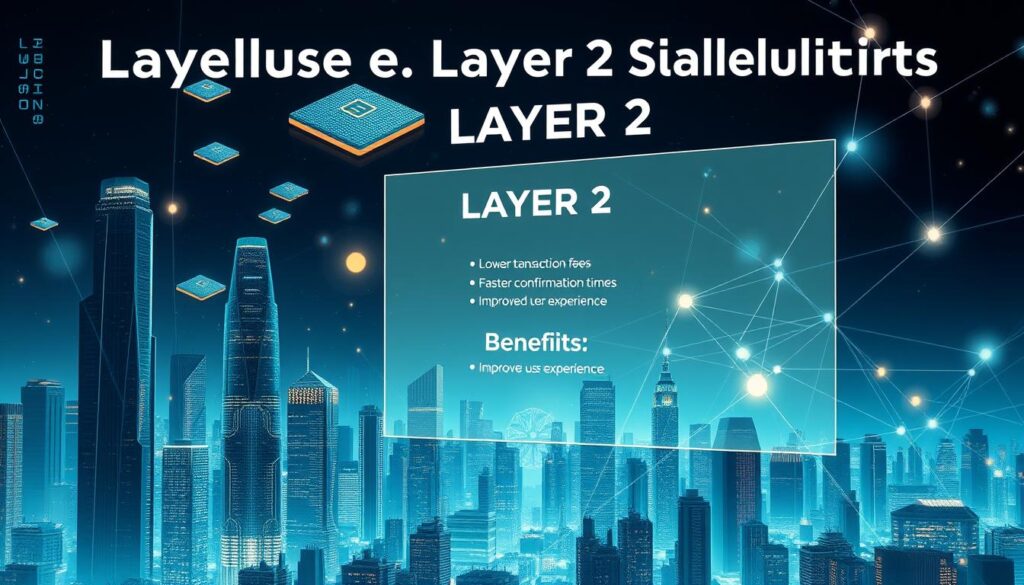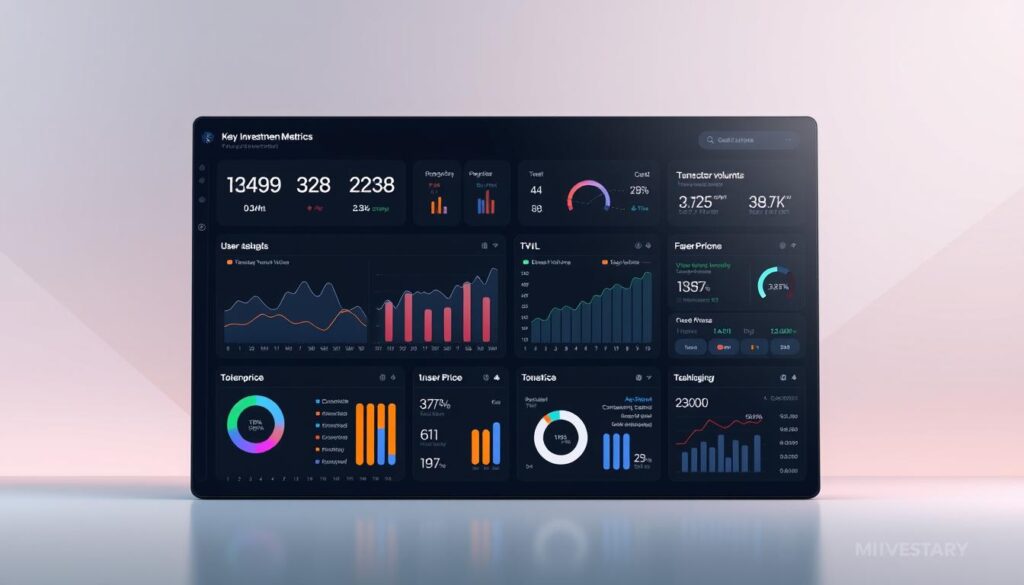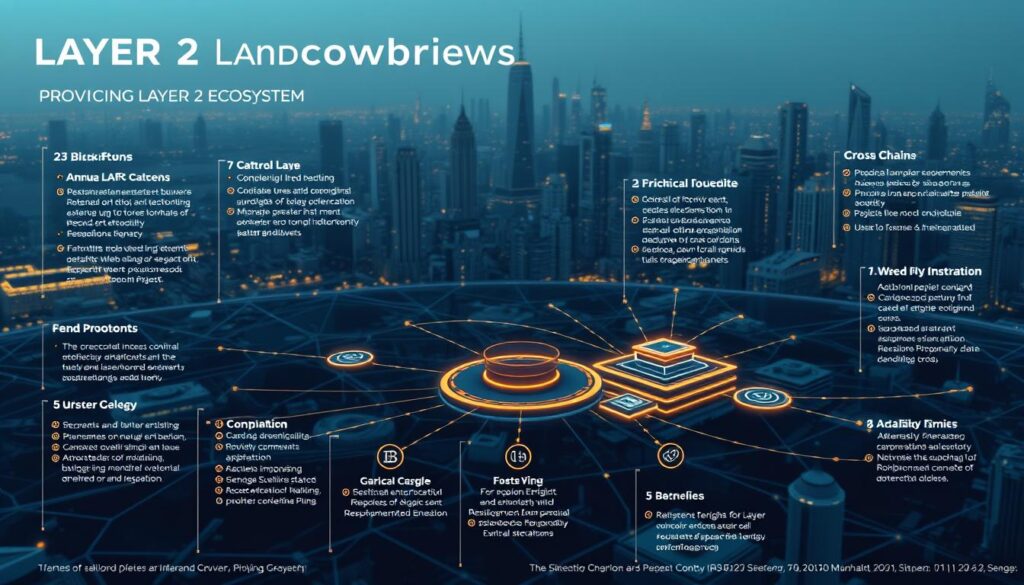Now Reading: Invest in the Best Layer 2 Crypto Projects for Investment
- 01
Invest in the Best Layer 2 Crypto Projects for Investment
Invest in the Best Layer 2 Crypto Projects for Investment

Blockchain technology has come a long way since Bitcoin’s debut in 2008. What started as a decentralized payment network now powers diverse applications like DeFi, GameFi, NFTs, and Web3. However, scalability remains a significant challenge for many networks.
Bitcoin processes about 7 transactions per second, while Ethereum’s main network handles around 15 TPS. These speeds fall far short of traditional systems like Visa, which can manage approximately 1,700 TPS. This limitation has created opportunities for innovative scaling approaches.
Scaling solutions have emerged as critical infrastructure addressing these limitations. They offer investors unique opportunities to participate in blockchain’s next evolution. The most promising ventures successfully balance scalability, security, and decentralization.
Understanding different scaling technologies is crucial for making informed decisions. Approaches like Optimistic Rollups and Zero-Knowledge Rollups represent significant advancements. These technologies enable faster processing, reduced costs, and better user experiences.
Key Takeaways
- Blockchain technology has evolved from simple payments to powering complex applications
- Traditional networks face scalability challenges with limited transaction speeds
- Scaling solutions address the blockchain trilemma of speed, security, and decentralization
- Different technological approaches offer varied benefits and trade-offs
- Strong ecosystem development indicates promising investment potential
- Real-world utility across multiple use cases demonstrates practical value
- The scaling ecosystem has matured with significant adoption and value locked
Understanding Layer 2 Solutions in the Crypto Ecosystem
Secondary frameworks built atop existing blockchain networks represent the next frontier in distributed ledger technology. These innovative approaches address critical limitations while maintaining core blockchain principles.
Definition and Core Concepts
Layer 2 solutions function as secondary processing systems that operate alongside primary blockchain networks. They handle transaction execution and data management in separate environments.
The fundamental concept involves taking computational burdens away from main chains. These protocols maintain security guarantees while dramatically improving performance through off-chain processing.
How Layer 2 Protocols Enhance Blockchain Scalability
These scaling solutions work by batching multiple transactions together. They process them using advanced cryptographic techniques before submitting compressed data back to the main network.
This approach increases transaction throughput from mere dozens to thousands per second. The technology creates efficient pathways that bypass congestion while leveraging underlying blockchain security.
Blockchain Scalability Challenges and the Role of Layer 2
Modern blockchain applications demand performance levels that foundational networks struggle to deliver efficiently. The blockchain trilemma presents a fundamental challenge where systems must balance scalability, security, and decentralization simultaneously.
Traditional networks face severe throughput limitations. Bitcoin processes approximately 7 transactions per second, while Ethereum handles around 15 TPS. This creates significant bottlenecks during peak usage periods.

Network congestion leads to auction-style fee markets where users compete with higher gas fees. During popular NFT drops or DeFi launches, costs can spike to hundreds of dollars per transaction. This makes micro-transactions economically unviable for everyday users.
Compared to traditional systems like Visa’s 1,700 TPS capacity, blockchain technology faces a substantial performance gap. This limitation becomes critical as the technology seeks mainstream adoption across financial services and enterprise applications.
Scaling solutions address these challenges by moving transaction execution off the main blockchain. They inherit security properties while enabling thousands of transactions per second at minimal cost. These approaches extend network capabilities without compromising decentralization.
Advantages of Investing in Layer 2 Crypto Projects
Scalability innovations represent some of the most promising investment avenues in the blockchain ecosystem today. These protocols deliver tangible benefits that directly address core limitations of traditional networks.
Faster Transactions and Lower Gas Fees
Secondary scaling networks process transactions significantly faster than primary chains. Solutions achieve thousands of transactions per second, making blockchain applications more responsive.
The reduction in gas fees is equally impressive. Leading protocols cut transaction costs by 90-95% compared to main networks. This makes activities like DeFi trading economically viable.
Lower fees directly impact user profitability. Micro-transactions and frequent trading become practical without prohibitive transaction fees.

Enhanced Security and Developer Support
These solutions maintain robust security by inheriting protections from underlying blockchains. Additional cryptographic techniques provide extra safeguards.
The ecosystem for developers has matured significantly. Comprehensive tools and familiar frameworks accelerate development of decentralized applications.
Active communities and documentation reduce technical barriers. This support system strengthens the investment case for top scaling solutions in the market.
Identifying the Best Layer 2 Crypto Projects for Investment
Successful scaling protocols distinguish themselves through tangible ecosystem development and sustainable user engagement. These ventures demonstrate measurable progress across multiple dimensions that indicate long-term viability.

Key Investment Metrics and Project Viability
Total value locked (TVL) serves as a crucial indicator of capital deployment and user confidence. Arbitrum commands over 51% market share among Ethereum scaling networks, showing strong adoption.
Market capitalization and token economics reveal valuation and utility. Native tokens often handle gas fees and governance within their respective ecosystems.
Transaction volume and daily active users demonstrate real network usage beyond speculation. Consistent growth in these metrics indicates strong product-market fit.
Developer activity and community support are leading indicators of long-term success. Active GitHub commits and diverse applications signal healthy ecosystem growth.
Technical innovation separates leading protocols from followers. Unique approaches to scalability challenges create competitive advantages in the market.
Team expertise and strategic positioning within the broader blockchain landscape significantly impact investment potential. Partnerships with major DeFi platforms enhance interoperability and utility.
Exploring Layer-2 Protocol Technologies and Solutions
Different scaling methodologies offer unique combinations of performance characteristics and security models. These approaches represent distinct technological pathways for enhancing blockchain capabilities.
The diversity of scaling solutions allows developers to choose optimal approaches for specific applications. Each technology balances trade-offs between speed, cost, and decentralization.
Optimistic Rollups vs. Zero-Knowledge Rollups
Optimistic Rollups assume transaction validity by default, only verifying when challenged. This approach reduces computational overhead while maintaining strong security guarantees.
Zero-Knowledge Rollups use cryptographic proofs to validate transaction batches efficiently. They offer enhanced privacy and faster finality for sensitive applications.
Both protocols significantly improve transaction throughput compared to base layer networks. They represent complementary approaches to blockchain scalability challenges.
Plasma Chains and Validium Approaches
Plasma chains function as specialized sidechains with independent consensus mechanisms. They process transactions off-chain while periodically committing to main chains.
Validium solutions combine off-chain processing with cryptographic validity proofs. This technology achieves high efficiency while maintaining robust security standards.
These approaches demonstrate the ongoing innovation in scaling technology development. They address specific use cases requiring maximum throughput or specialized functionality.
Insightful Project Overviews in the Evolving Layer 2 Landscape
Protocol ecosystems have evolved to address specific use cases with specialized scaling approaches. The market now features established leaders alongside innovative newcomers.

Leading Projects: Arbitrum, Optimism, and Polygon
Arbitrum dominates the scaling space with over 51% market share. This protocol handles 2,000-4,000 transactions per second using Optimistic Rollup technology.
Optimism provides Ethereum’s security while processing transactions much faster. It achieves throughput of 2,000 TPS with significant gas reductions.
Polygon stands out with exceptional capacity exceeding 65,000 transactions per second. Its multichain ecosystem employs diverse technologies including zkRollups.
| Protocol | Throughput (TPS) | Total Value Locked | Market Capitalization | Core Technology |
|---|---|---|---|---|
| Arbitrum | 2,000-4,000 | $10.7 billion | $2.37 billion+ | Optimistic Rollup |
| Optimism | 2,000 | $5.5 billion | $3 billion+ | Optimistic Rollup |
| Polygon | 65,000+ | $4 billion | $7.5 billion+ | zk Rollup |
Emerging Networks and Innovative Protocols
Newer solutions like Base leverage institutional backing for mainstream adoption. Manta Network focuses on privacy while Immutable X specializes in gaming applications.
Innovative protocols such as Starknet utilize advanced cryptographic proofs. These emerging networks offer different risk-reward profiles for strategic portfolio allocation.
The diversity across these ecosystems creates opportunities across technological approaches. Each network serves distinct community needs through specialized solutions.
Evaluating Network Performance and Transaction Efficiency
Network performance evaluation reveals critical differences between scaling solutions. Understanding these metrics helps investors identify protocols with sustainable advantages.
Performance assessment requires examining multiple dimensions. These include raw throughput, confirmation times, and cost structures.
Throughput, Transaction Speeds, and Cost Efficiency
Throughput capabilities vary dramatically across different protocols. Polygon achieves over 65,000 transactions per second, while Arbitrum handles 2,000-4,000 transactions per second.
Transaction speed involves both processing time and finality periods. Some solutions offer near-instant confirmation with minimal delay.
Cost efficiency represents the most tangible benefit for users. Leading protocols reduce gas fees by 90-95% compared to main networks.
| Protocol | Transactions Per Second | Gas Fee Reduction | Finality Speed |
|---|---|---|---|
| Polygon | 65,000+ | Up to 95% | Fast |
| Arbitrum | 2,000-4,000 | Up to 95% | Moderate |
| Optimism | 2,000 | Up to 90% | Moderate |
| Immutable X | 9,000+ | Gas-free minting | Fast |
Performance evaluation must consider real-world conditions. Networks should maintain efficiency during peak usage periods.
Different use cases prioritize various performance aspects. Gaming platforms need maximum throughput, while DeFi applications value cost efficiency.
Real-World Applications: dApps, DeFi, and NFT Marketplaces
Real-world deployment of advanced scaling solutions reveals how these technologies are reshaping digital experiences and economic models. These platforms enable practical implementations across diverse sectors.
Adoption in Decentralized Finance and Gaming
Decentralized applications in finance have transformed user experiences. Major DeFi protocols now operate on scaling networks with significant advantages.
Gaming platforms leverage enhanced infrastructure for complex interactions. Players enjoy seamless transactions with true ownership of digital assets.
| Platform | Primary Use Cases | Notable Applications | User Benefits |
|---|---|---|---|
| Arbitrum | DeFi, NFT Marketplaces | Uniswap, SushiSwap | Lower fees, faster execution |
| Polygon | NFTs, DeFi protocols | OpenSea, Aave, Curve | Mass adoption, interoperability |
| Immutable X | Gaming, Digital Collectibles | Gods Unchained, GameStop | Gas-free transactions |
| Optimism | DeFi, Derivatives | Synthetix, Lyra | Ethereum compatibility |
| Starknet | Trading, Fantasy Sports | dYdX, Sorare | Advanced privacy features |
Enhanced Scalability Driving User Engagement
Improved scalability removes barriers that previously limited adoption. Users can interact with applications without concerning themselves with technical complexities.
The ecosystem benefits from smoother experiences across all types of decentralized applications. This drives sustained engagement and broader adoption among diverse user groups.
Enhanced performance makes practical use of blockchain technology accessible to mainstream audiences. The technology becomes invisible while delivering tangible benefits.
Navigating Risks and Future Trends in Layer 2 Investments
Investing in scaling protocols requires a clear-eyed view of both their potential and the challenges they face. The landscape is dynamic, influenced by core blockchain upgrades and broader market forces.
Impact of Ethereum 2.0 on Layer 2 Protocols
Ethereum’s ongoing upgrades, particularly the integration of Danksharding, are designed to boost the main network’s data availability. This evolution is complementary to scaling solutions.
Enhanced data availability on Ethereum can significantly reduce transaction costs for these protocols. It strengthens the entire ecosystem, making applications more efficient for users.
Regulatory, Technological, and Market Considerations
Several factors demand careful attention. Regulatory frameworks are still developing, creating uncertainty but also opportunity for legitimization.
From a technology standpoint, novel cryptographic systems may have unforeseen vulnerabilities. Cross-chain bridges have been a particular target for exploits.
Market dynamics include intense competition among projects and correlation with broader cryptocurrency cycles. A diversified strategy across established and emerging networks can help manage these risks while capturing growth in this vital sector of blockchain development.
Conclusion
Scalability protocols represent a fundamental shift in how distributed systems handle transaction volume and user growth. These solutions address core limitations that have hindered blockchain adoption for years.
The investment potential stems from making technology accessible through faster, cheaper transactions. This enables practical applications across finance, gaming, and social media.
Multiple approaches create a diverse ecosystem with different risk profiles. Understanding this landscape helps identify sustainable opportunities as adoption accelerates globally.
FAQ
What are the main benefits of using a Layer 2 protocol?
These protocols offer significant improvements in speed and cost. They process transactions faster and with much lower fees than the main blockchain. This efficiency is crucial for decentralized applications, gaming, and managing digital assets like NFTs.
How do Layer 2 solutions improve blockchain scalability?
They enhance scalability by handling transactions off the main chain. This reduces network congestion. By processing transactions per second more efficiently, these platforms increase overall throughput without compromising the underlying security.
What is the difference between Optimistic and Zero-Knowledge Rollups?
Optimistic Rollups assume transactions are valid and only run computations if a challenge is issued. Zero-Knowledge Rollups use advanced cryptography to validate transactions off-chain before posting proof to the mainnet. ZK-Rollups generally offer faster finality.
Why are gas fees lower on networks like Arbitrum and Polygon?
These networks bundle many transactions together before settling them on Ethereum. This batching dramatically reduces the data load and associated transaction costs. Users enjoy faster, cheaper interactions with DeFi protocols and other dApps.
How secure are Layer 2 networks for my digital assets?
Security is a top priority. Most solutions derive their safety from the main blockchain, like Ethereum. They use cryptographic proofs or fraud detection mechanisms to ensure the integrity of all transactions and asset ownership.
What role do Layer 2 platforms play in the growth of DeFi and NFTs?
They are essential for mainstream adoption. By lowering fees and increasing processing speed, these networks make decentralized finance and NFT trading accessible to a broader community of users, fueling ecosystem development.
What should I consider before investing in a Layer 2 project?
Key factors include the technology’s maturity, total value locked (TVL), developer activity, and community growth. Evaluating the project’s roadmap and its ability to deliver real-world utility for applications is also critical.















